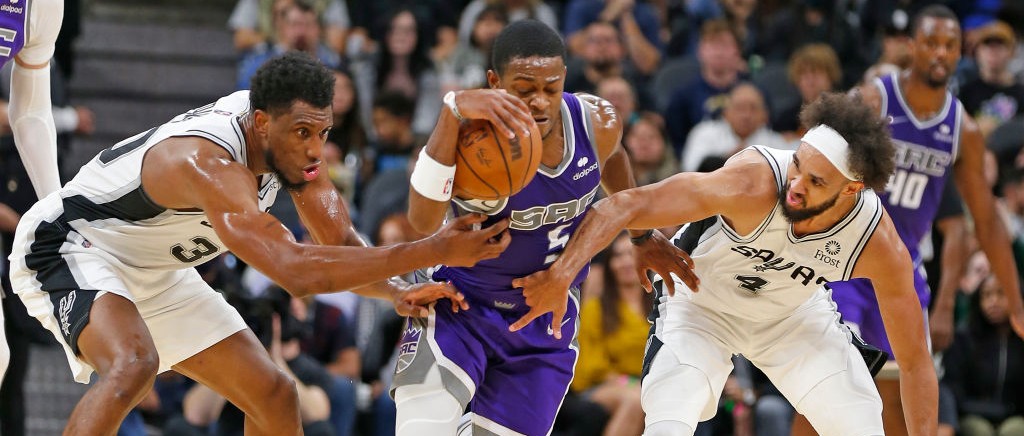
The NBA made a fairly dramatic change in officiating this offseason by putting a point of emphasis on not calling as many fouls when offensive players initiate contact by unnaturally moving into a defender. The results have been rather delightful for fans and defenders, while the players who used to stroll to the free throw line regularly have found them far less enjoyable.
Games have felt less stop-start and the league has already seen the fruits of that rule change in the form of fewer offensive players jumping into defenders to draw shooting fouls, stopping on screens, and sweeping through on drives. With how quickly we’ve seen players starting to adapt to new rules, it’s given hope that the NBA can take the other remaining scourge to the flow of games: the take foul (aka the Euro Foul).
Players stopping fast breaks by grabbing their opponent at midcourt has taken away so many possibilities for dunks and easy baskets, and it’s clear that the league’s clear path rules aren’t doing enough to dissuade players from eating a foul to stop an odd-man (or sometimes, oddly enough, an even-man) break. The league is reportedly already looking into options and there are plenty of options to consider, but when you take into account that the goal should be to improve game flow, further penalizing those fouls might not have the intended consequence.
Instead, a popular concept has been the addition of a soccer-style advantage policy, that allows play to continue until the team with the ball either scores within direct flow of action or, if they don’t, the referees go back and hand out the foul at the spot it happened. This would allow situations where a foul happens on a pass ahead to play out and a team get their bucket, without needing to stop play for a clear path review and take the ball out — Mike Prada has been among those pounding the drum on an advantage rule and highlights an example where it would’ve freed up a Zach LaVine fastbreak dunk on Sunday night in L.A.
The NBA needs a soccer-style advantage rule, Part 700.
(This ended up being a clear path foul, but we could’ve saved five minutes with an advantage rule). https://t.co/V4xZ8yQ9NO pic.twitter.com/87TE4vCWzY
— Mike Prada. (PRAY-duh) (@MikePradaNBA) November 15, 2021
It would take some getting used to, but it would improve game flow considerably if rather than blowing a play dead, officials simply raised an arm and let play go, noting that a foul took place but not stopping everyone. That alone won’t fix things, but it is the best starting point for getting away from all the whistles and stoppages that ruin fast breaks.
The first critique of an advantage system is that this will just lead to harder take fouls, but the answer to that is pretty simple: if players start trying to give harder fouls, it becomes much easier to hand out flagrants which are two shots and the ball, as well as coming with a fine attached. Players don’t want to get tagged with a flagrant, and if it’s a combination of letting play go on for soft fouls that don’t stop action and handing out flagrants for harder fouls that do, that would seem likely to be effective in pushing take fouls out of the game.
On top of that, since you have an official raising an arm to note a foul has occurred, even if you let play go on and a basket count, those take fouls can still be added to the scorebook to count against that player and team’s foul total during the next stoppage of play. That would add another layer of punishment to keep players and teams from still just trying a take foul, because even if play isn’t stopped, it would still count towards that player’s foul count and towards getting the other team in the bonus faster.
It would certainly be a major shift for the NBA to accept an advantage rule officially, but referees already do so in certain situations when they let minor contact go on some layups if the basket is made and blow the whistle if it rims out. It’s not the letter of the law, but it is part of their way of keeping the game flow going, and this would just be a formal application of that principle that would help both cut back on the efforts of players to break up one of the most exciting parts of the game in the fast break.
